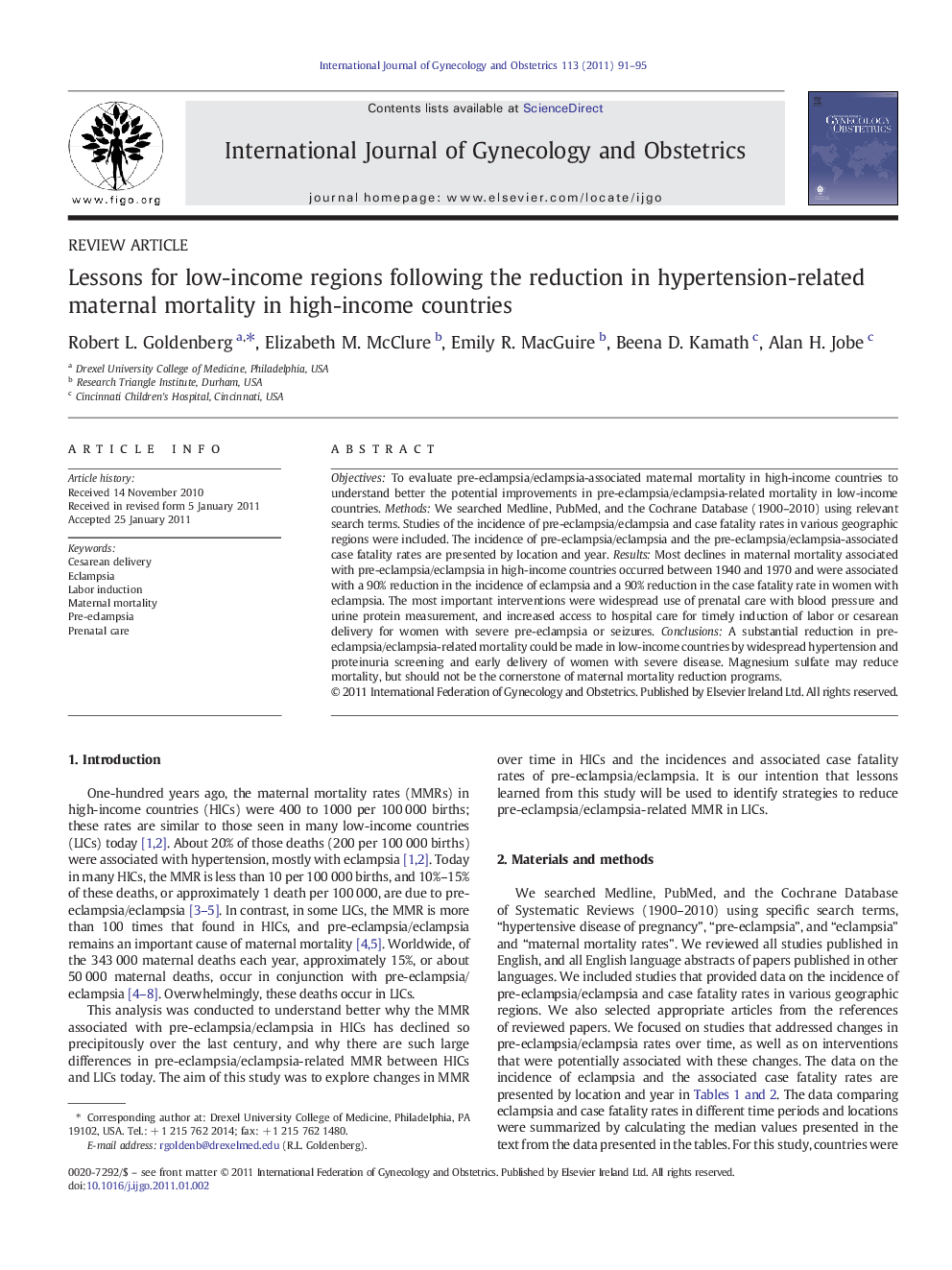| Article ID | Journal | Published Year | Pages | File Type |
|---|---|---|---|---|
| 3949614 | International Journal of Gynecology & Obstetrics | 2011 | 5 Pages |
ObjectivesTo evaluate pre-eclampsia/eclampsia-associated maternal mortality in high-income countries to understand better the potential improvements in pre-eclampsia/eclampsia-related mortality in low-income countries.MethodsWe searched Medline, PubMed, and the Cochrane Database (1900–2010) using relevant search terms. Studies of the incidence of pre-eclampsia/eclampsia and case fatality rates in various geographic regions were included. The incidence of pre-eclampsia/eclampsia and the pre-eclampsia/eclampsia-associated case fatality rates are presented by location and year.ResultsMost declines in maternal mortality associated with pre-eclampsia/eclampsia in high-income countries occurred between 1940 and 1970 and were associated with a 90% reduction in the incidence of eclampsia and a 90% reduction in the case fatality rate in women with eclampsia. The most important interventions were widespread use of prenatal care with blood pressure and urine protein measurement, and increased access to hospital care for timely induction of labor or cesarean delivery for women with severe pre-eclampsia or seizures.ConclusionsA substantial reduction in pre-eclampsia/eclampsia-related mortality could be made in low-income countries by widespread hypertension and proteinuria screening and early delivery of women with severe disease. Magnesium sulfate may reduce mortality, but should not be the cornerstone of maternal mortality reduction programs.
